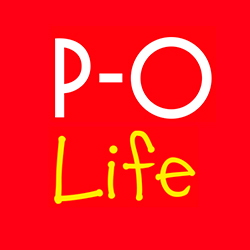The P-O might not be able to boast exciting animals like wolves, lynx or bears but, like the rest of the Pyrenees, it has several interesting ruminants: a type of chamois, a special sheep and three species of deer – some more common and easily seen than others.
Pyrenean chamois (Isard)
This goat-antelope was hunted almost to extinction, especially in the 1940s, for leather production. The total population from east to west coast is now around 50,000 and it’s our most common alpine ruminant, found in altitudes up to 3000m. Although a deadly virus has wiped out the population in some parts of the Pyrenees, for the time being the P-O chamois seem relatively immune.
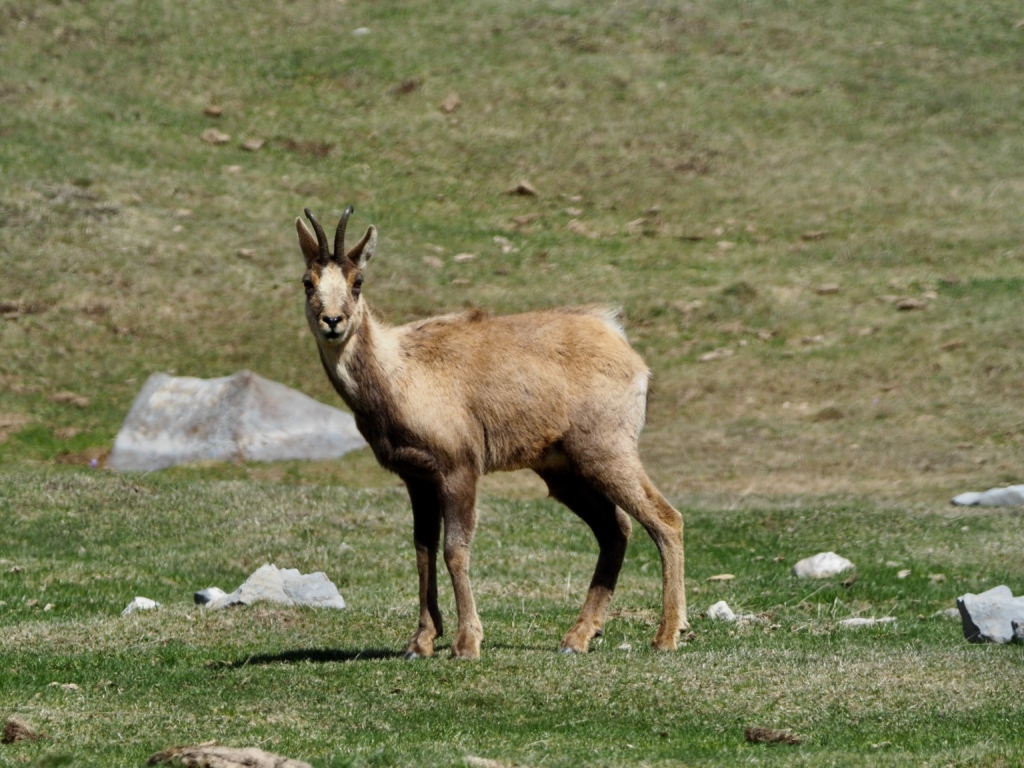
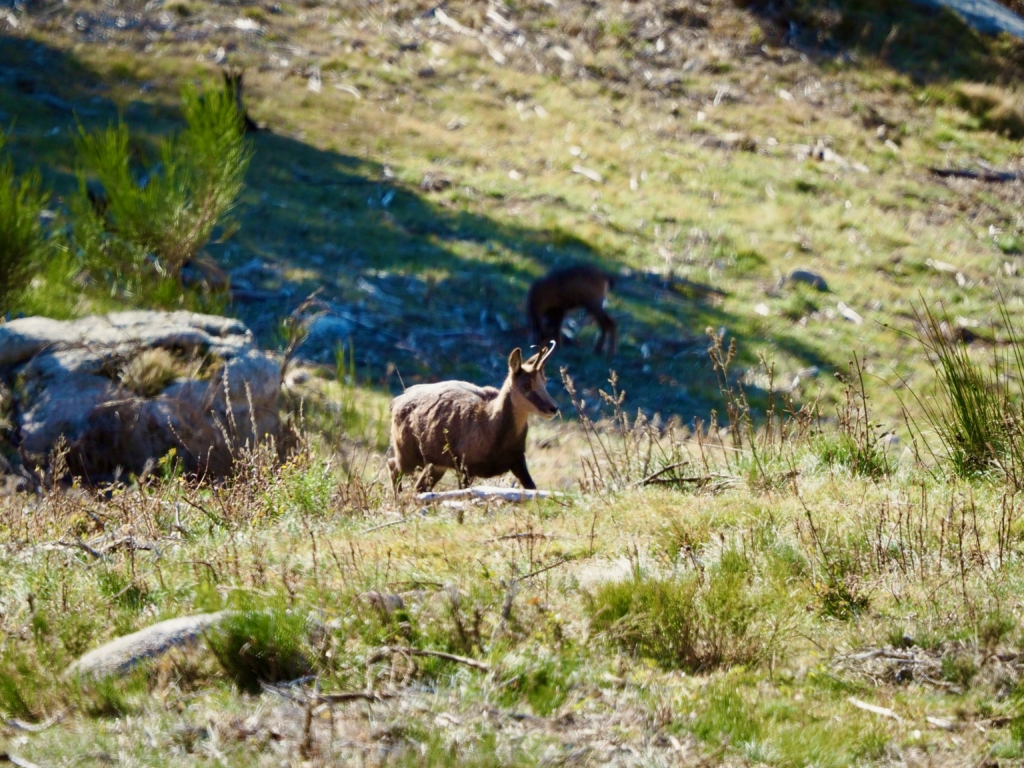
During the autumn rut they don’t lock horns but do a lot of posturing to drive competitors away. Males lead a solitary life outside the mating season.
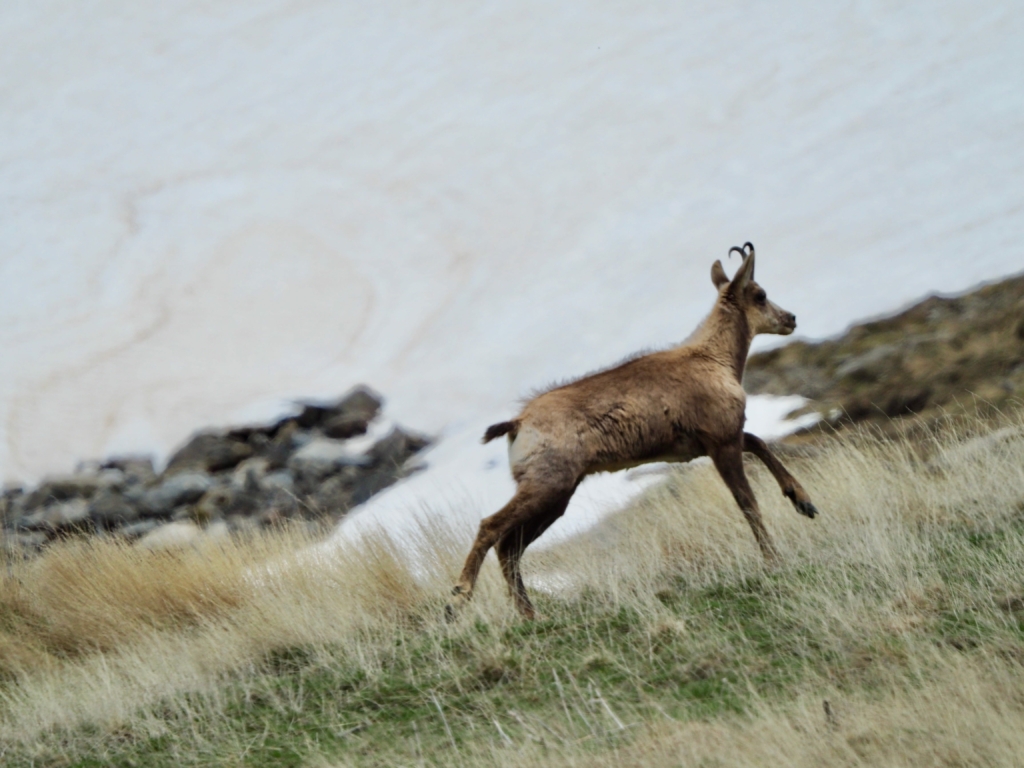
Mouflon
A wild sheep native to Corsica and introduced to the Pyrenees in 1960. Much less agile than chamois.
The sexes mix during the rut (October – January) and, not liking snow, they come down to lower slopes in winter, so may be more easily seen then. However, they can recognize a human from over 1,000m away, so are more likely to spot you before you spot them! I’ve yet to see one.
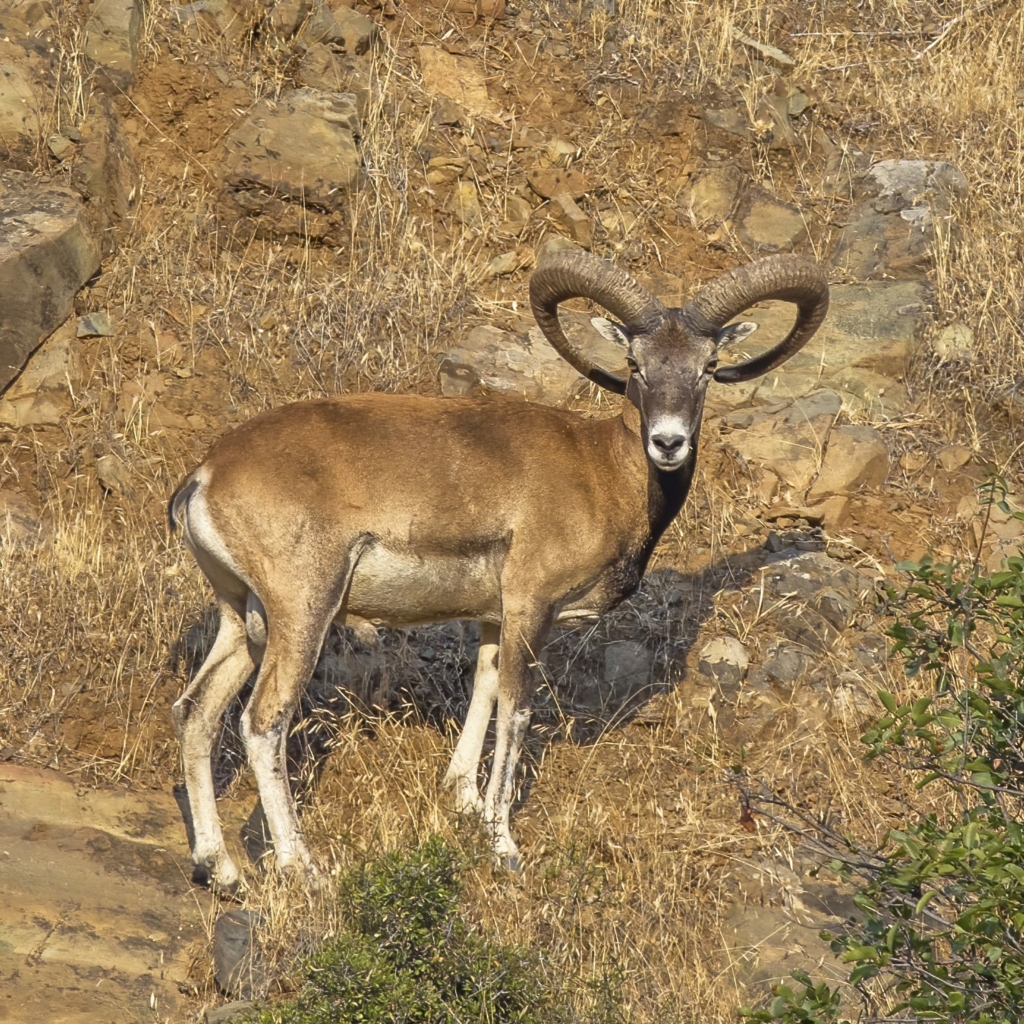
Roe Deer (Chevreuil)
Unlike all our other ruminants, these rut in July/August.
More active at night, their “bark” alarm call can sound eerie if you can’t see the animal.
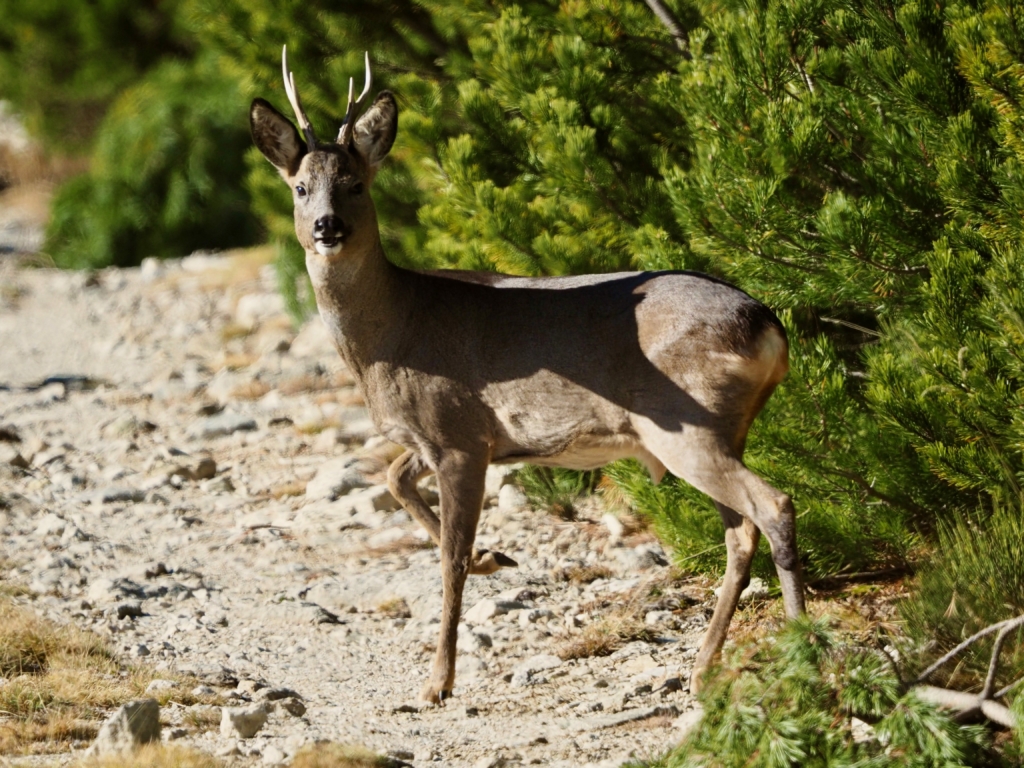
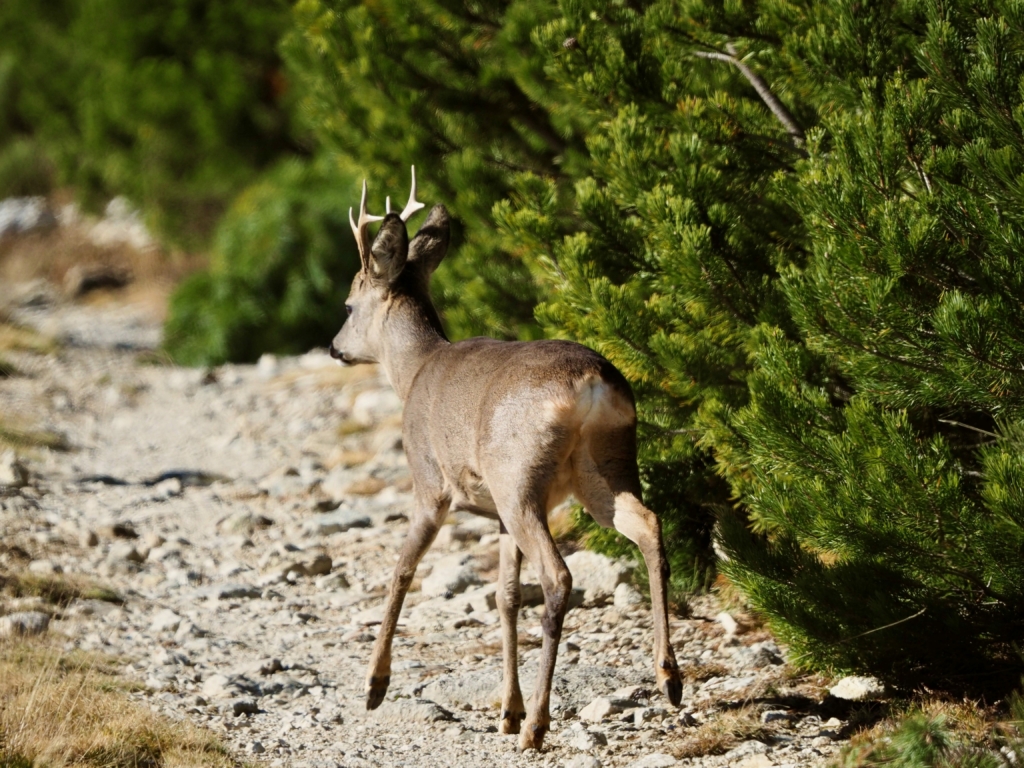
Red Deer (Cerf élaphe)
The largest & most impressive of P-O species – but not nearly as numerous as in Scotland!
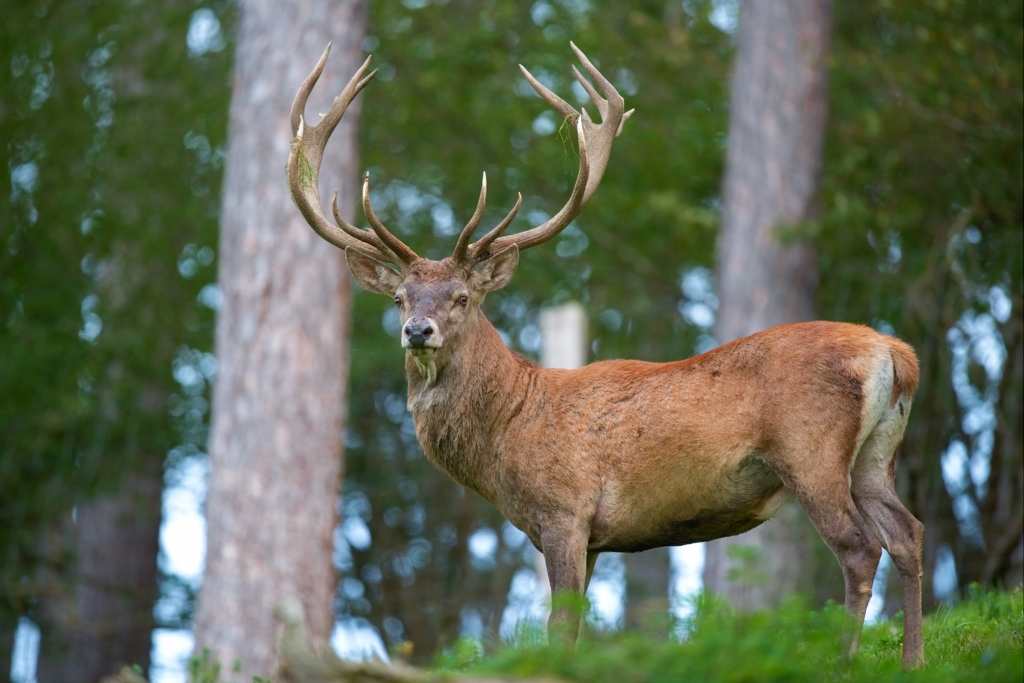
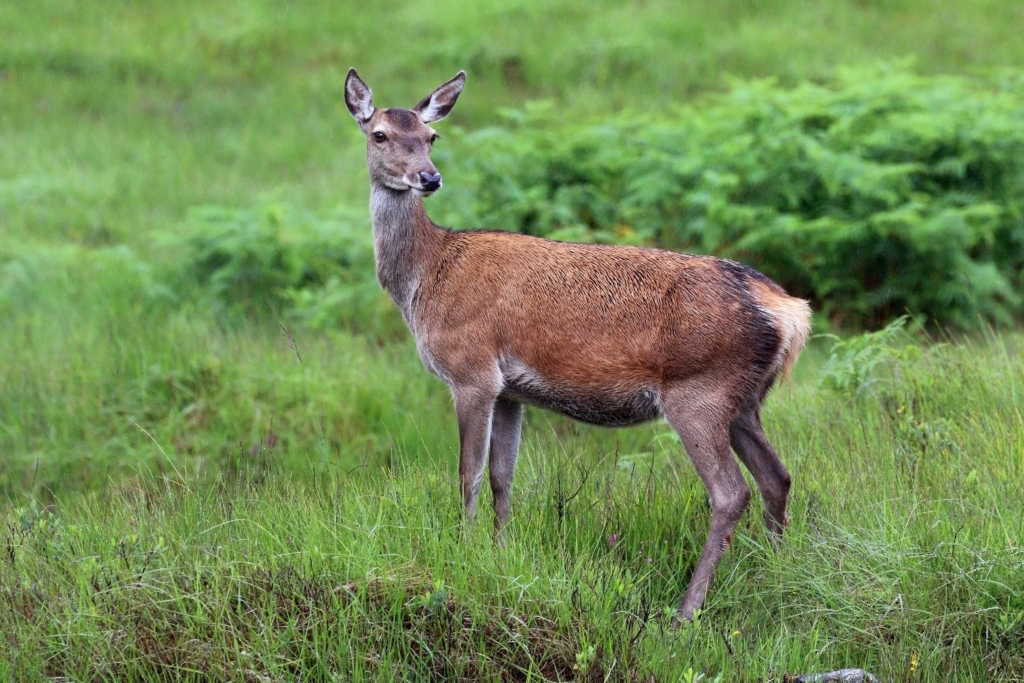
Fallow Deer (Daim)
Much less common than red or roe. It’s the only species that has spots, but – just to confuse you – not all are spotty. Their coats can range from light to dark, gingery brown (at Aiguamolls in Spain, there’s even an all-white one!) and they have a black stripe down the middle of their tail.
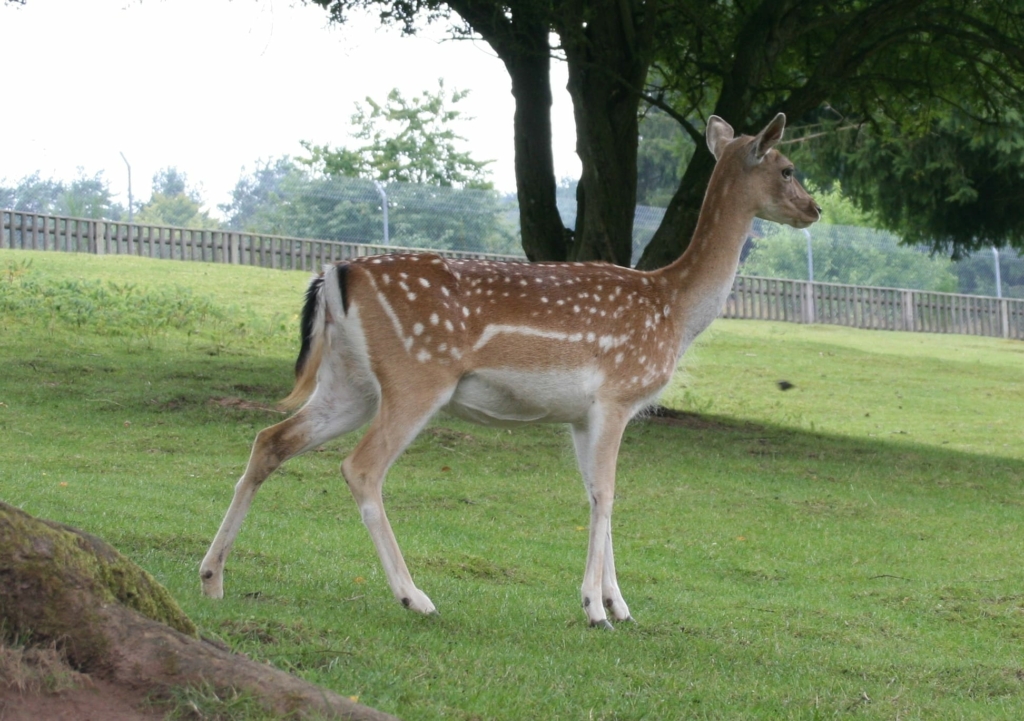
Like the other two species, the males’ antlers have a distinctive shape.
Where best to see them:
Mouflon & chamois – Puigmal & Porte-Puymorens areas. (A few mouflon are also in the eastern end of the Albères.)
Deer – roe & red could be seen almost anywhere, especially where there is forest. Some companies lay on trips to watch the red deer rut in the Cerdagne and Capcir. Fallow are very rarely seen in the Albères, apparently, having spread from a reintroduction in the 1980s to the wetlands reserve at Aiguamolls de l’Empordà near Empuria Brava in Spain.
I’ve also seen chamois & roe deer in the Prats de Mollo reserve in November.
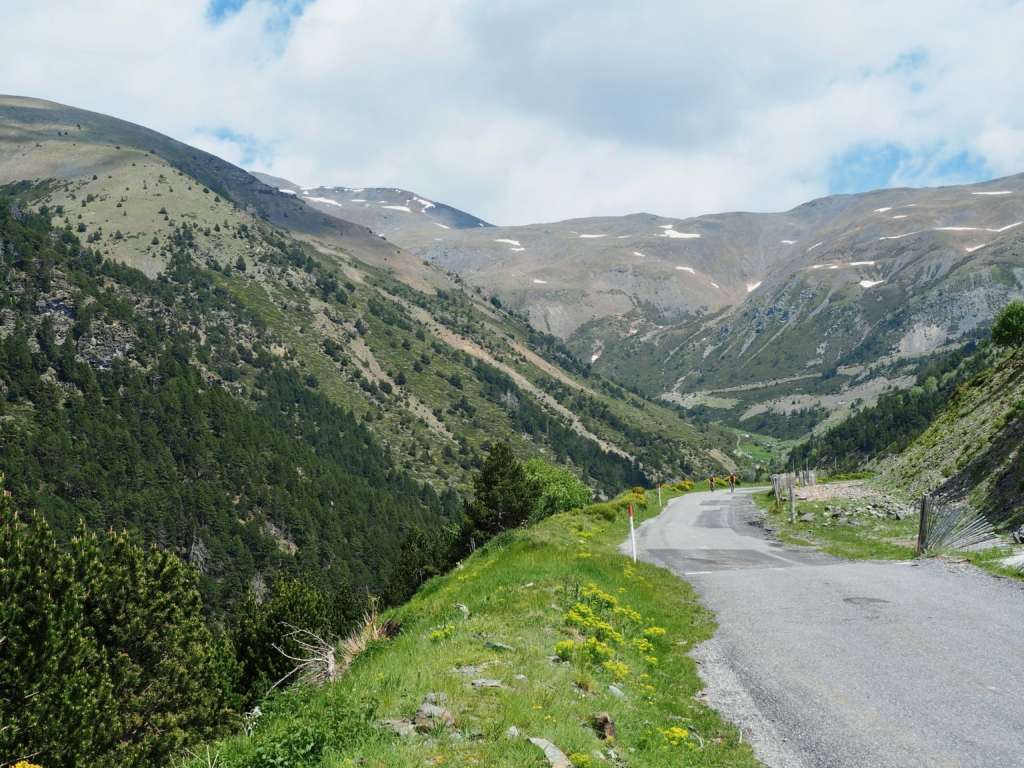
Puigmal (Bad mountain) in the Cerdagne
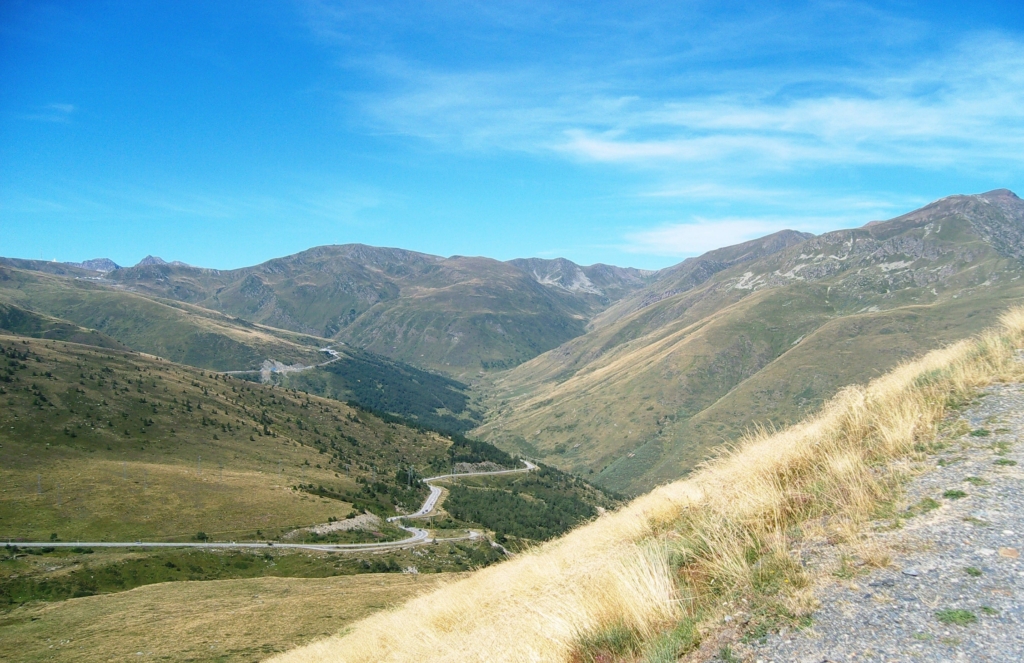

Réserve Naturel de Prats de Mollo
Size & Weight
| Body Length (cm) | Shoulder Height (cm) | Weight (kg) | |
| Pyrenean Chamois | 90-130 | Up to 80 | Up to 50 |
| Mouflon | Up to 120 | Up to 90 | 30-55 |
| Roe Deer | 95-135 | 63-67 | 15-35 |
| Red Deer | 160-250 | 100-120 | 120-240 |
| Fallow Deer | 130-160 | 76-94 | 29-100 |
DID YOU KNOW?
When I stayed with friends in a chalet in Eyne last September, we were surprised one evening when a young red deer stag appeared in the garden, unbothered by us standing on the balcony. In fact he was a regular visitor to the community and by this spring had got himself into the news. Most residents welcomed “Monsieur le cerf” but, inevitably, one complained to the Mairie after he ate their flowers! Worried that their mascot might be euthanized, other locals protested and launched a petition to save him. In April the mayor said it was up to the Préfecture and l’Office français pour la biodiversité to decide what to do, if anything. Let’s hope he’s still around and will survive this hunting season

Monsieur le cerf, Eyne
BY LESLEY MCLAREN
Lesley McLaren is one of “The Warblers”, a group of natural history enthusiasts based in the P-O.
For more blogs and photos, or if you’d like to contact them, visit www.mediterraneanpyrenees.com
You can also follow them on Twitter @66warblers
All photos by “The Warblers”, unless otherwise stated

